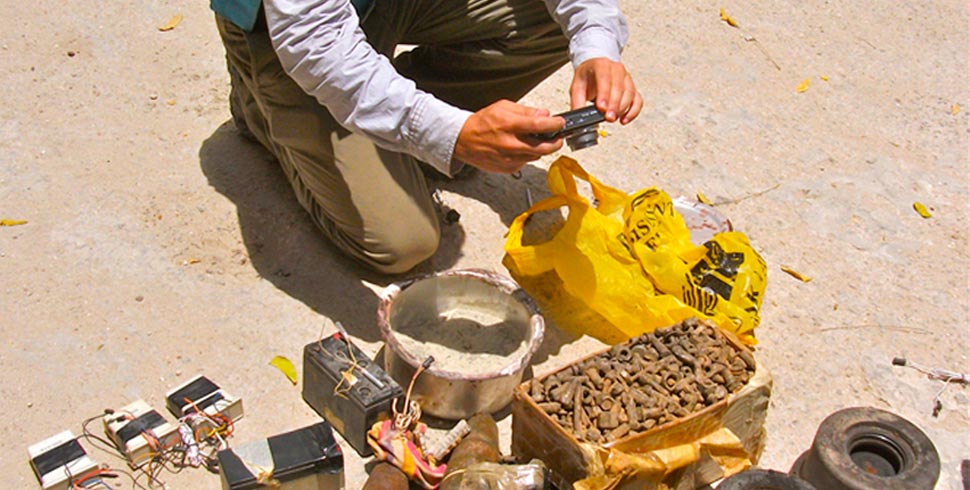Not all materiel documented by CAR can be immediately published on iTrace®. CAR’s insights into diversion dynamics affecting a particular conflict are continually evolving. Interested parties are encouraged to regularly check the site and to contact CAR directly with any further enquiries. Each item documented by CAR undergoes a four-stage verification procedure before being published on the iTrace® system. CAR also includes a fifth stage—right of reply—following public release.
1. Field verification
CAR field investigators document all items on site and identify potential cases of diversion. If required, the team launches additional investigation missions for the cases identified.
2. Internal verification
CAR’s analysts review cases, and work with investigators to identify any inconsistencies or uncertainties in the case. If the case passes this process, and if required, CAR initiates a formal tracing procedure.
3. Trace requests
Where relevant, CAR issues a formal trace request either to a national government party to the chain of custody, or to the manufacturer of the materiel concerned.
Where relevant, CAR issues a formal trace request either to a national government party to the chain of custody, or to the manufacturer of the materiel concerned.
4. Release
CAR evaluates any national government objections provided within the 28-day non-objection procedure and may repeat stages 1–3 above. The outcome of this process determines whether CAR releases the information for public distribution on the iTrace® system.
Trace requests issued to national governments are sent electronically to that government’s Permanent Mission to the United Nations in New York.

5. Right of reply
After public release, any party involved in the case may use the ‘right of reply’ form on this website to contest aspects of a case or contribute further information. The case may be removed from public view pending the resolution of any contested aspects of a case.
After public release, any party involved in the case may use the ‘right of reply’ form on this website to contest aspects of a case or contribute further information. The case may be removed from public view pending the resolution of any contested aspects of a case.

